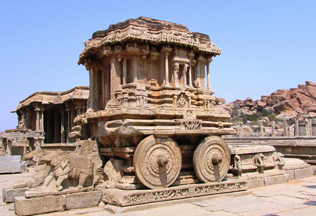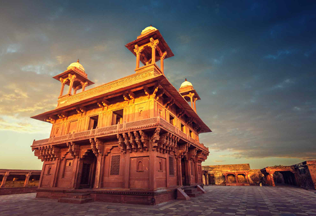India has exotic varieties of granite, marble, slate, sandstone etc., and quite a number of them are not found anywhere in the world. This had drawn the attention of world nations, which wanted to import them for use in their respective lands.
GRANITE :
Granite is strong and durable which makes it lasting building material for construction. The exclusivity of granite can further be listed as below :


- Granites are more resistant to wear and tear as well as weathering, it is most suitable and everlasting stone.
- Being harder, granite requires more processing compared to other stones. For instance, a final high gloss finish on granite is generally achieved by using power driven polishing tools and fine grit diamonds.
- Ageless – always contemporary.
- Knowledgeable architects, aware of its unique qualities, are using it more extensively than ever before.
- Texture of the rock also decides its suitability as an ornamental stone or for ordinary construction purposes.
MARBLE :


The Salient Features of marble are :
- Translucent. It can reflect 80-95 % visual of the objects.
- It is also hard compared to other building materials other than granite.
- It is soluble. Its residue is very negligible.
- It has capacity to resist stress.
- Marbles show variety of textures on account of existing minerals & re-crystallization patterns.
- Texture depends upon form, size, and uniformity of grain arrangements.
SANDSTONE :
It is dimensional stone comprising of silica sands in comprised form. Sandstones of India have good hardness. Quartz is the main component of sand stone.


Features :
- Sandstones appear natural, rustic and also robust and durable and also strikingly, flexible.
- As Indian sandstones have very small size grains, their density is very high, making them frost resistant and all-season-proof.
- Variable in colour – frequently red, brown, greenish, yellow, grey, white.
- Medium-grained. Usually well sorted, that is grains all about the same size; grains sub angular to rounded.
Sandstone is best suited for laying pavements as its surface has good grip It is available in different shades and fits into every surrounding. It can be arranged in traditional designs as well as modern patterns. Sand Stone is available in many sizes.
LARGE SIZE : Large size paving stones are the right ones for terrace and vast areas. They are practical when laid as floor covering to accommodate tables, chairs, sun beds, etc.
SMALL SIZE : If small size paving stones are used for floor and wall panelling, small areas look larger. Relation between gap and paving stone is an important factor to be taken into account as more gaps can be seen as a creative element when the paving stones are smaller. Gaps and paving material are therefore complementary to each other.
SLATE:
Slate is made of fine clay sediment It can be defined as a fine grain rock derived from clays possessing a cleavage that permits it to be split into thin sheets.
Features :
- Colour & patterns – Greyish Black, Multicolour, Brown, Red etc.
- Dazzling varieties – Golden, Copper, Silver Shine, Green Mica, Speckle, Deoli, Mahu, Silver Grey etc.
Classification:
- Designated ‘I’ or “interior” on specification sheets; exterior is marked as either ‘E’ or “exterior.”
- Limited colour variation : Relatively uniform in background/field colours, veining and or movement.
- Moderate colour variation : Background colour has some variation and veining/movement may appear. Inspection / blending prior to installation is suggested.
- Extreme colour variation : Background colour has significant variations and contrasts. Veining variations and movement may be inconsistent.
QUARTZITE :
Quartzite can be easily distinguished from sandstone by the fact that it fractures across its constituent grains of sand, while sandstone fractures along the line of the cementing material between the grains of sand
Features :
- Most often it is white, light grey, yellowish, or light brown, but is sometimes coloured blue, green, purple or black by included minerals. It results from the metamorphism of pure quartz sandstone.
- Much harder than the parent rock, sandstone.
- When broken, will break across the grains
- The best way to tell quartzite from sandstone is to break the rocks. Sandstone will shatter into many individual grains of sand while quartzite will break across the grains.

